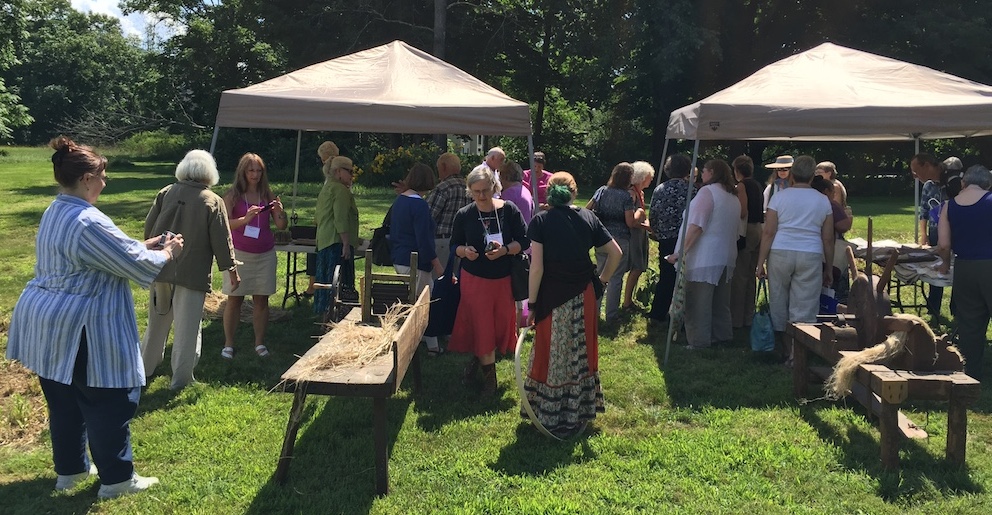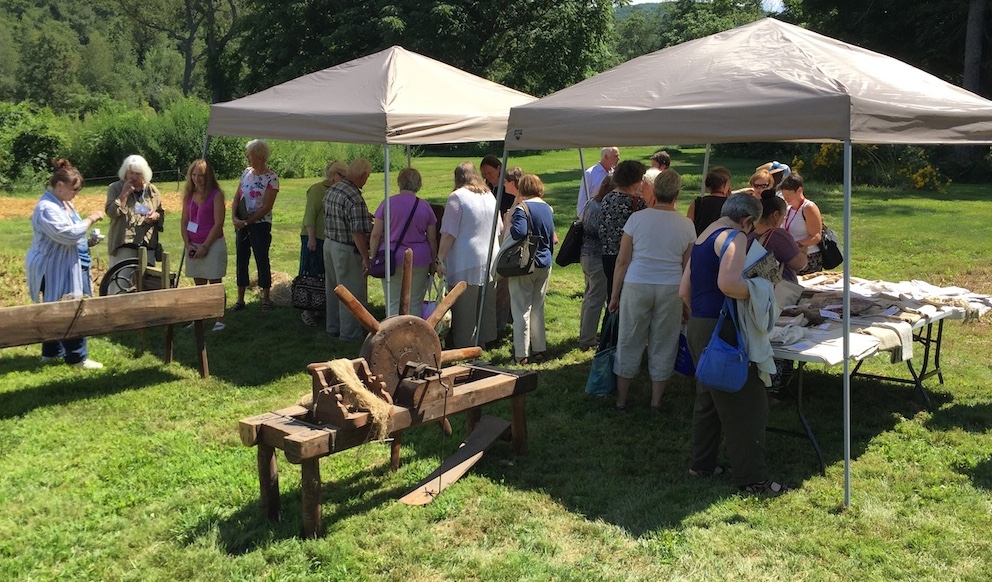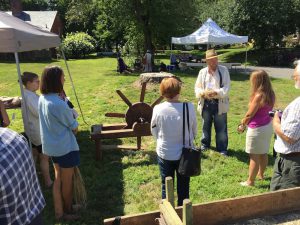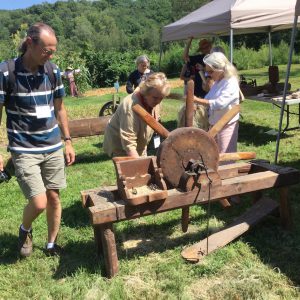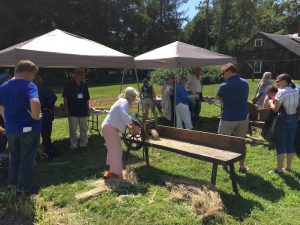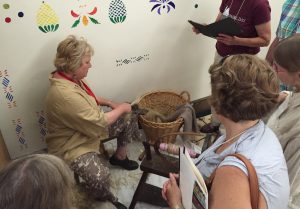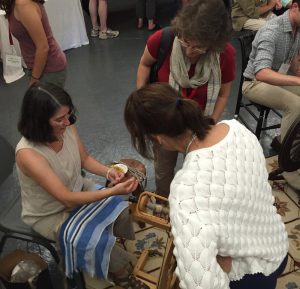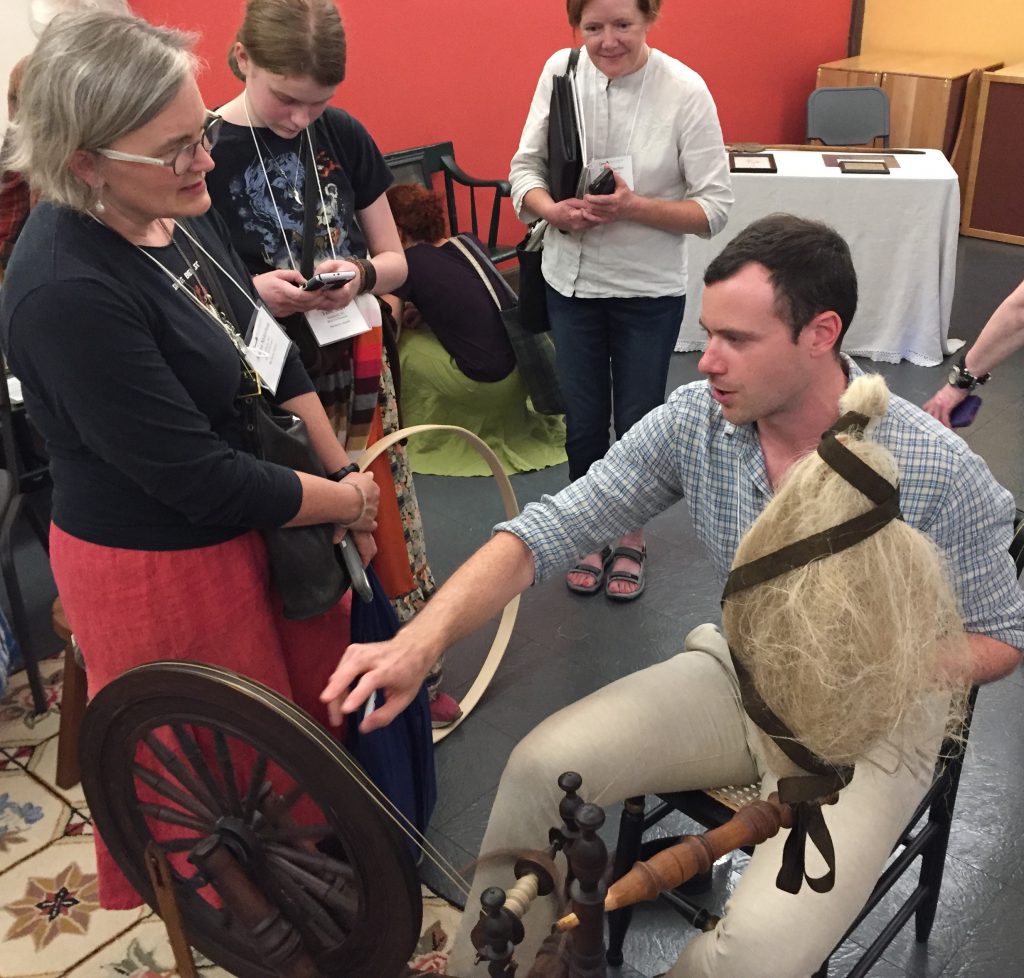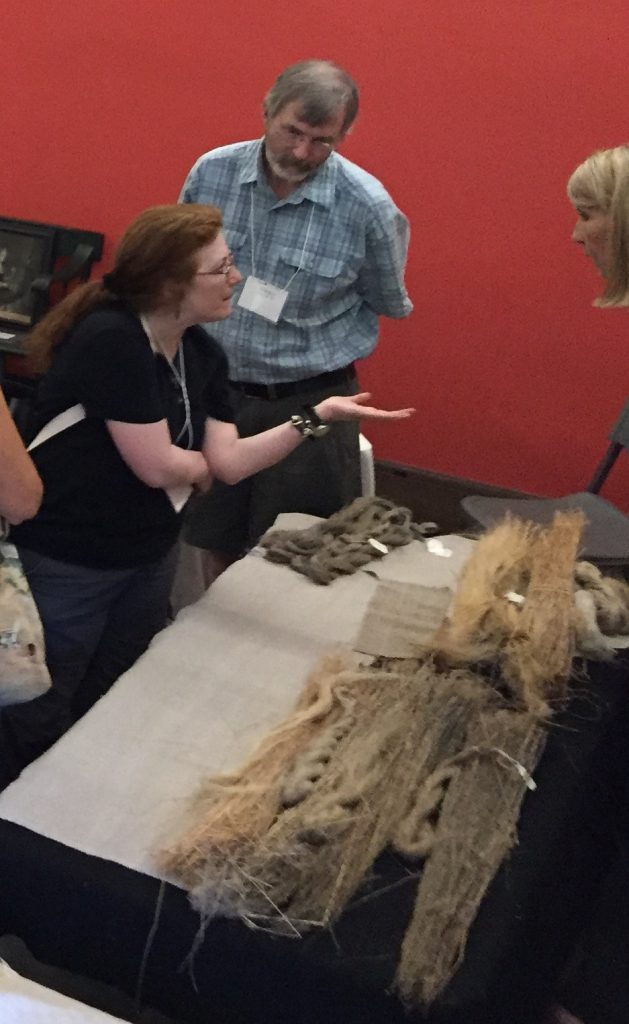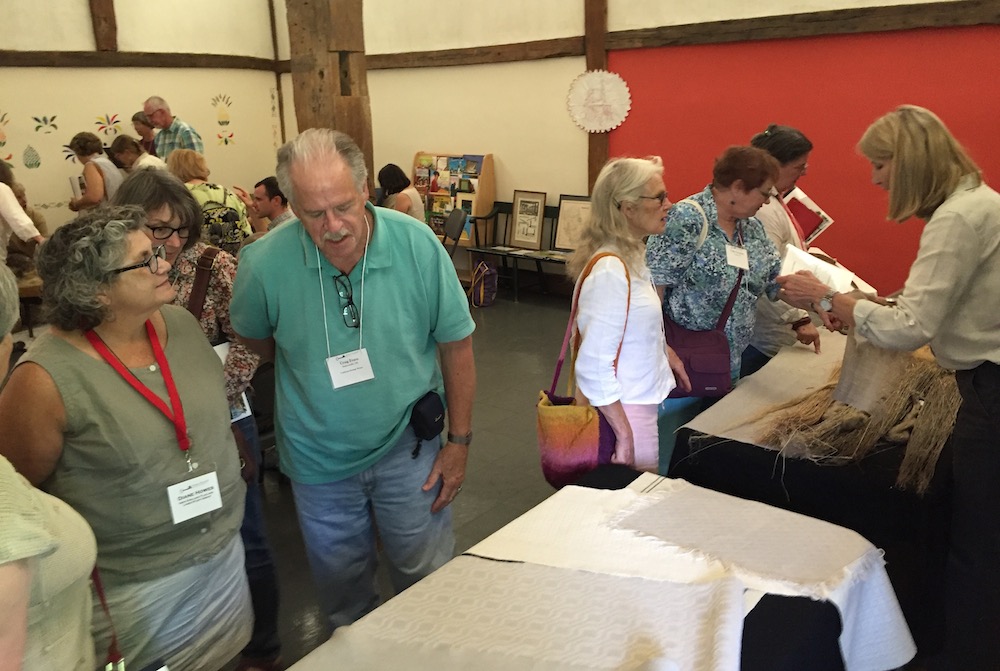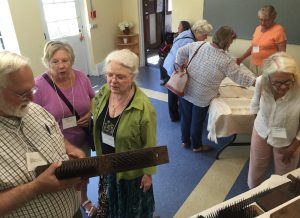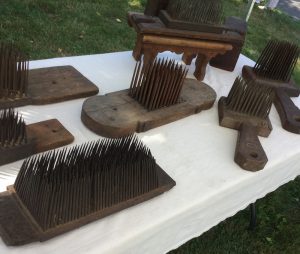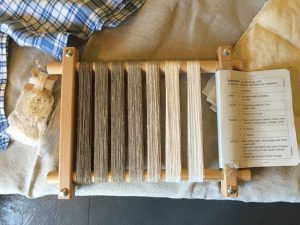Picking up where I left off…. During the demonstration session on Saturday afternoon, I couldn’t personally walk around and take pictures of everything, since I was responsible for running one of the flax dressing stations. Thankfully, my beloved Matthew ran around to do the photo-documentation. I hope presenters and participants don’t mind being featured here, but I really want to show photos of people doing their flaxy thing. What made this weekend so incredible was all the people who presented and attended. The objects and artifacts were fascinating and informative, no doubt, but the fact that living people were actively examining, interpreting, and using them was the most thrilling and meaningful part to me. The expressions of rapt attention, concentration, puzzlement, and joy are demonstrative of the feelings we were all experiencing!
The first stop on our mini-tour of Saturday afternoon’s demo session is Christian and Johannes Zinzendorf’s display of tools and antique textiles. Here are a couple wide angle views:
Even though I am a weaver and I care about antique cloth, I was most excited about two tools: the brake that uses rollers to crush the straw, and the rotating scutching wheel. The rotary scutching wheel, in particular, I think could be immensely useful in speeding up the flax preparation process for small-scale growers. In fact, the line of flax processing equipment developed by TapRoot Fibre Lab uses similar mechanical processes to get the job done, with a 21st century flair.
Here is Christian talking to the crowd about the scutching wheel:
Here is New England Flax and Linen Study Group member Gina Gerhard checking it out:
Here is a symposium participant using the rolling brake, with Johannes taking a strategic position in the shade (did I mention that it got very hot that afternoon? And I got a sunburn? And I had to borrow Matthew’s Cornell Ornithology Lab yellow bellied sapsucker baseball hat because I forgot to bring my own? All true. Here comes the colon.):
There were many other fascinating things to marvel at under the outdoor tents, but let’s move to the second stop on the virtual tour. Inside the History Workshop were the spinning demos, tables of amazing handwoven linen cloth, retting samples, and other precious items that we decided needed to be under cover in case of rain.
Here is Gina Gerhard prepping some short flax fibers, known as tow, to spin on her antique tow wheel:
Here is Chris Hammel demonstrating spinning flax on a modern wheel:
And here is Justin Squizzero demonstrating spinning on an antique wheel:
Here is Becky Ashenden at her wheel, while a participant holds a dressed distaff. Becky is holding a tow distaff, and is presumably explaining the difference between tow and line fibers:
Below, Cassie Dickson explains her lovely and mind-boggling display of retted fiber to a curious participant. Cassie’s display featured the different colors of fiber that result from different retting conditions (fungi! bacteria! minerals! temperature! season!). Later in the weekend she explained the finer points of retting to the whole group. A wider view of Cassie’s display:
Heritage weavers Craig Evans and Diane Smith Howes admire Cassie’s handwoven cloth:
The third stop on my vitual tour is the other side of the History Workshop building, where Ron Walter and Kitty Bell displayed select pieces from their impressive collection of antique tools and textiles. In the foreground, Ron is explaining some construction details of how a hetchel is made, and in the background Kitty answers questions about the textiles.
Last stop, some of Gina’s unique holdings. I call this one “whole lotta hetchels goin’ on!”:
And here is Gina’s record of her bleaching experiments, which she presented at greater length later in the weekend:


